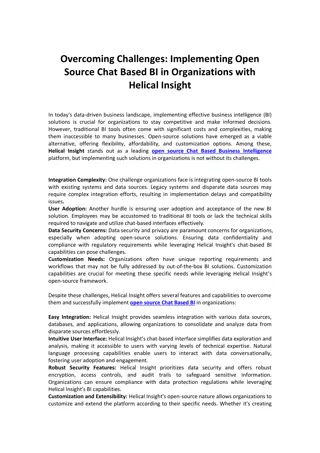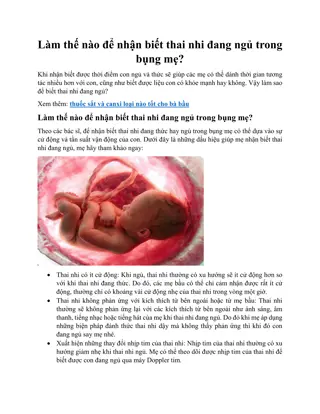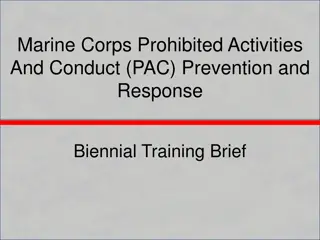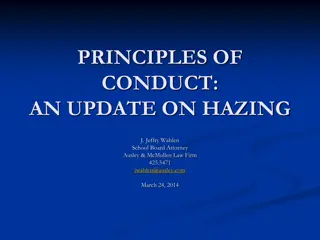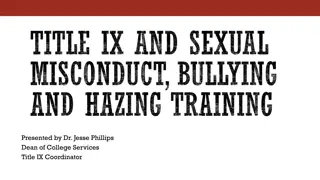The Complexities of Hazing in Organizations
Exploring the historical context, reasons, societal acceptance, and legal implications of hazing within organizations. The article delves into the blurred lines between fun activities and harmful hazing practices, highlighting the devastating consequences of extreme cases. Through discussions on national attention to hazing deaths and laws against hazing, the piece emphasizes the importance of recognizing and addressing the fine line that separates harmless traditions from dangerous rituals.
Download Presentation

Please find below an Image/Link to download the presentation.
The content on the website is provided AS IS for your information and personal use only. It may not be sold, licensed, or shared on other websites without obtaining consent from the author.If you encounter any issues during the download, it is possible that the publisher has removed the file from their server.
You are allowed to download the files provided on this website for personal or commercial use, subject to the condition that they are used lawfully. All files are the property of their respective owners.
The content on the website is provided AS IS for your information and personal use only. It may not be sold, licensed, or shared on other websites without obtaining consent from the author.
E N D
Presentation Transcript
Fun & Games vs. Hazing: Where is the line drawn By Matilda J. Foster & John Stuart Batchelder The University of North Georgia
History of Hazing The mistreatment of new/ prospective members of an organization by senior members of the organization. Dates as far back as 387 B. C. Punishment: 1340 A. D. United States: 1657
Reasons for Hazing Martin Luther (1539) A means of preparing young men to endure future hardships Perception that the newcomers are uncivilized Fagging
Why People Are Okay With Being Hazed Meet Vital Social Needs: Feeling of belonging to a group Friendship Social Status Gain Respect & Admiration
National Attention to Hazing Deaths due to hazing 1838-1969: 35 Reported Since 1969: 250+ Reported Robert Champion (2011) Homosexual & African-American Beaten to death by fellow classmates Band members Max Gruver Alcohol poisoning (2017)
Defining Hazing & Laws Against Hard to define Similar to obscenity: I know it when I see it (Justice Potter Stewart) Willingness to participate Condition to join an organization Mental vs Physical Harm 2019: 44 States have Anti-hazing laws 13 Felony O.C.G.A. 16-5-61 (2010) Max Gruver Act: July 1, 2021
Is Everything Hazing? Any activity or situation intentionally or unintentionally created, with or without consent, whether on or off the organization s premises, which endangers the mental or physical health of participants; which provides physical discomfort which subjects the individual to embarrassment, harassment, or ridicule; which creates excessive fatigue, physical, or psychological shock to the individual; which requires participation by the individual in quest, treasure/scavenger hunts, stunts, morally degrading or humiliating games and activities, road trips or any other such activities; which requires late or early work sessions or any activity which is not consistent with the academic achievement, laws, rituals, an/or policies of the organization or the regulations and College Policies or applicable state law
Studies on Perceptions of Hazing Multiple studies asking respondents to rank their level of agreement using Likert type scales One study used a Factorial Design survey One vignette with four dimensions Based on Answers: 9 out of 10 respondents had been hazed but did not considered themselves to have been hazed(Allan & Madden, 2008). . 80% reposted that they had been hazed but only 12% considered themselves to have been hazed(Hoover, 1999).
This Study Why the discrepancy in reporting between state/ university definitions and respondent definitions? Methods 19 interviews: 30 minutes each Current study used 12 interviews Sample: Gender: 6 Male & 6 Female Year: 4 Freshmen, 4 Sophomores, 2 juniors & 2 Seniors Race: 1 African-American, 9 Caucasians, & 2 Hispanics
Potential Initiation Rituals Not being allowed to use certain staircases on campus or to walk on the grass. Wearing articles of clothing picked out by members of the organization. Being woken up in the middle of the night. By turning on the lights By yelling By making a loud noise By cold water Being forced to do physical exercise. Indoors Outdoors Being forced to eat or drink certain foods/beverages.
Methods Recorded Interviews Transcribed Atlas.ti 31 codes, represent distinct differences in comparisons between organizational members and non organizational. Gender differences
Female Non Female Non- -organizational Member organizational Member Hazing is something demeaning. It (hazing) is purposely humiliating somebody. Depends on if it s, again if it s designed to humiliate someone, then I think it is hazing. Especially if people were chubby like me, I would die If it s done to shame somebody or to demean somebody then you know, you know to me it s all about the intent. If everybody is sitting around gawking and laughing at the person doing it, you know, the person that s eating the food is being demeaned. There s a border line there because some people are allergic to certain foods. If nobody is allergic to it and it s not mean or condescending then it s fine.
Female Organizational Members Female Organizational Members Interviewer: Can you define hazing for me? Respondent: Um, well I think hazing is all circumstantial and I think when it comes to hazing you have the option not to do it or to do it. I could choke and die on this (holds up a Cheerio), this is not hazing (puts Cheerio in mouth). I guess it could be hazing if someone is of a certain religion certain types of clothing depending on their religion or their religious beliefs ; If they make you drink alcohol and that s against your religious beliefs then like yeah that s hazing.
Male Non Male Non- -organizational Members organizational Members I would consider hazing anything that does physical, mental or emotional harm to someone... and it s not considered like pain or them being hurt. it s not really harming, it s just limiting. it s putting you outside of your comfort zone, but not in a sense that it s purposely trying to hurt you, so I would probably put that more on the not hazing side. Gallon Challenge
Male Organizational Members Male Organizational Members Interviewer: Ok, how about being forced to eat something? Respondent: Um, yeah like that s, I would say that that s pretty much always hazing because you know, it s unnecessary Doing something mentally or physically just to do it to them, not to have any purpose behind it. If you re required to wear it for no reason it s still considered hazing. Forcing somebody to wear sunglasses I would probably say that s hazing like if if there s no reason to wear sunglasses.
Hazer: Understanding Why Unintentional: Respondent: It does not start out that way Interviewer: Oh, ok Respondent: Nobody just gets out there the first night isn t the worst night you have experienced. That s why at the end of it you have a hell week and a hell night, because people (are) just going and going and building into that character. Interviewer: Ok Respondent: And it s hard to stop Competitiveness: some of them just start taking it up a notch and then a new notch trying to outdo themselves and it gets really bad.
Hazee: Understanding Why they started something so they don t want to quit willpower goes a long way a lot of people are just not quitters, they just don t want it to get the best of them.
Stopping Hazing 530 A. D.: Byzantine emperor Justinian decreed that the hazing for first year law students must end (Nuwer, 2004). If you try to ban it (hazing), they are going to find a way to do it and if you try to enforce it, it s only going to make them work harder to hide it I think the tighter they get, the worse it s going to get. Hazing is just part of the culture that we live in, unfortunately 2021: Felony
Policy Change so colleges should maybe have guidelines on what is hazing and what is not, not completely banish it, because it, well you know what I mean. Because the more you prohibit something from someone the more they are going to want to do it Permission for scavenger hunts Lists of what is and what is not.
Reference Allan, E., & Madden, M. (2008). Hazing in view: College students at risk. Initial finding from the national study of student hazing. Retrieved from http://www.hazingstudy.org/publications/hazing_in_view_web.pdf Arnold, J. C. (2004). Hazing and Alcohol in a College Fraternity. In Newer, H. (Ed.), The Hazing Reader (51- 105). Bloomington, IN: Indiana University Press. Cholbi, M. J. (2009). On Hazing. Public Affairs Quarterly, 23(2), 143-160. Ellsworth, C. W. (2006). Definitions of Hazing: Differences among selected student organizations (Master s thesis). Retrieved from http://drum.lib.umd.edu/bitstream/1903/1577/1/umi-umd-1647.pdf Nuwer, H. (Ed.). (2004). The Hazing Reader. Bloomington, IN: Indiana University Press.




